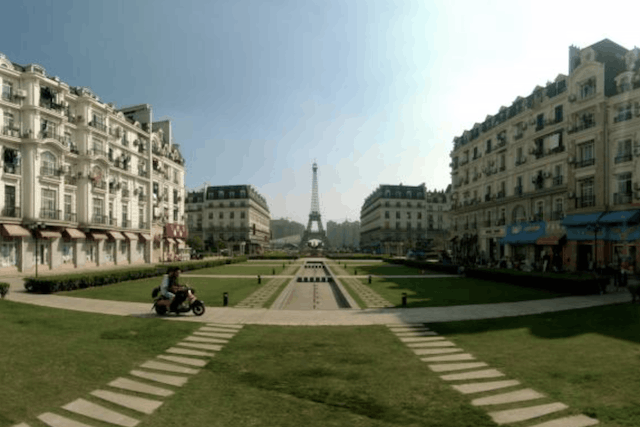This weekend I floated over China, climbed to the top of Mount Everest and became a body of water--all from the comfort of my home, thanks to the Lux Film Fest’s VR to Go.
Developed by the virtual reality pavilion’s Montreal partner Phi, VR to Go is a fantastic option not just for those who might be less comfortable visiting the pavilion at Neimënster in person given the pandemic, but also for those who prefer to digest the films in their own time, in their own space.
The process of reserving is simple and can be done online. After picking up the headset on Friday, I was tempted to test out the films under the sun near the Alzette but waited until I got home--a good choice.
There are two programmes to choose from when you reserve: I went for programme 1, the non-fiction and documentaries option, but programme 2 looks equally tempting, with its fiction and sci-fi options ranging from a spiritual journey with Jan Kounen’s “Ayahuasca” to a zombie animation, “Gloomy Eyes”.
Programme 1 did not disappoint: I started with Benoit Felici and Mathias Chelebourg’s 2018 “The Real Thing”, which takes viewers to Paris, Venice and London--without ever leaving China. Film transports, but VR gives you the dizzying, dreamlike quality of soaring over water, under bridges, between buildings. This film ended up being my favourite--I watched it four times over the weekend--because the floating quality, from bird’s-eye-view to a child’s perspective--was hypnotic.
“The Real Thing” also cleverly transforms the viewer into the object of the lens---without giving away too much, the film is bound to leave an impression, especially on those of us who have been pining for international travel throughout this pandemic.
“Accused #2: Walter Sisulu” also cleverly puts the viewer in a central role at times. The work by Nicolas Chapmeaux and Gilles Porte brings to life the testimony of Nelson Mandela’s mentor Walter Sisulu while he’s on trial, and it’s simply a work of art. What surprised me with this film and “Notes on Blindness: Into Darkness”--which gives an impression of writer John Hull’s gradual vision loss--is how instrumental and intelligent sound design can amplify the VR experience.
With “Daughters of Chibok”, I felt as if I were hearing the story firsthand from a mother who lost her daughter to Boko Haram. I was hypnotised, if not a bit on edge with anticipation, by the reflections, movement and artistry behind Karolina Markiewicz and Pascal Piron’s “Precious Human Factor”. Watching “Le Lac” I was plunged into the depths of what should be Lake Chad, although it has been disappearing at alarming speed--only to be climbing to the top of the world the next moment with Jonathan Griffith in “Everest” (you can see a 360-version below, albeit in a more limited format).
The wonderful thing about VR to Go is that over the few days, you can revisit films and have a completely unique experience each time. You’re at the director’s mercy, of course, in terms of orientation and how you enter a scene, but how you decide to explore the world around you varies each time. “Soaring” while standing is a completely different experience than if you try reclining on a sofa. I found myself sitting down to be part of a discussion circle, air boxing, even attempting a few ballet moves, and each view of each film caused me to discover something I hadn’t seen the first time, making the overall experience a complete delight.
Kudos to the Luxembourg Film Fund and organisers to make VR to Go an option: Luxembourg is the third location ever to feature the technology, developed less than a year ago, and after just a weekend with it, I’m secretly hoping VR to Go will be here to stay, even outside the film festival. Could it become a regular subscription option? A service where you could check it out regularly, similar to a library book, with new content to discover each rental period?
